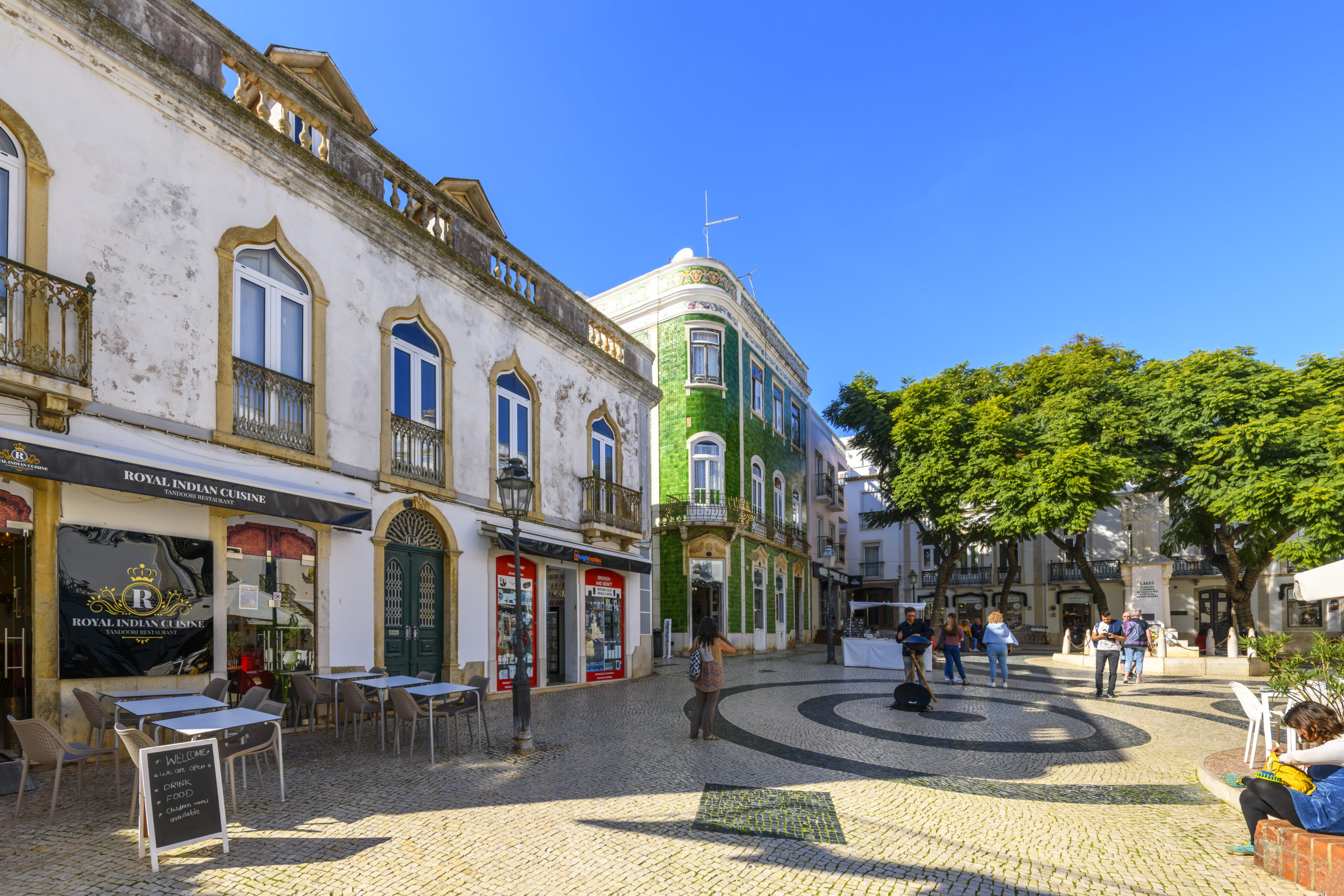Lagos has found its perfect balance. Unlike British-dominated Albufeira or upmarket Vilamoura, this western Algarve town attracts a diverse crowd whilst keeping its Portuguese soul intact. Surfers mix with retirees, backpackers cross paths with families, and this eclectic bunch gets on rather well between the historic centre and the spectacular beaches.
A Surf and Maritime Heritage Atmosphere
Lagos breathes surf culture. Converted vans occupy car parks near the beaches, surf shops dot the town centre streets, and the atmosphere stays relaxed even at the height of summer. The town draws a young, international crowd that gives it a dynamic edge missing from the more family-oriented resorts along the coast.
The historic centre has retained its authenticity. Sixteenth-century walls still encircle the old town, the fort overlooks the harbour entrance, and the cobbled streets maintain their original layout. Lagos was the departure point for Portuguese maritime expeditions to Africa – a past sometimes better forgotten, including its slave market, the first in Europe. Now converted into a small museum, the site serves as a reminder of this complex history.
The mix works brilliantly: beer bars sit alongside traditional tascas, youth hostels neighbour family-run guesthouses, and the modern marina engages in conversation with the old fishing port. Lagos remains Portuguese at heart.
Lagos Beaches: Golden Cliffs and Hidden Coves

You’ll find some of the Algarve’s most beautiful beaches here. Ponta da Piedade alone justifies the trip to Lagos. These ochre cliffs sculpted by the ocean form a maze of caves, arches and rocky pillars accessible via a 200-step stairway. In summer, tourist boats jostle to explore the marine caves, but early morning or off-season, the place regains its magic.
The beaches follow one after another along the coast. Dona Ana, the most photographed, with its turquoise waters between golden cliffs – perfect for postcards, packed in July and August. Praia do Camilo requires effort (200 steps again) but rewards with its intimate setting. Surfers prefer Meia Praia, a massive 4-kilometre stretch of sand on the eastern side, where space is never an issue even in peak season.
Porto de Mós, further west, offers an interesting compromise: large supervised beach, decent beach restaurants, and far enough from the centre to filter out the crowds. The more determined will push on to Praia da Luz, technically outside Lagos but accessible in 10 minutes by car, for its more family-friendly and British atmosphere.
The Town Centre: Tapas Bars and Portuguese Alleyways
Lagos centre actually lives and breathes, unlike the dormitory towns along the coast. Praça Gil Eanes concentrates the action with its terraces and statue of Henry the Navigator keeping watch over the evening drinks. Adjacent streets line up fish restaurants, tapas bars and surf shops in a cheerful mix.
Nightlife remains measured – no strips dedicated to boozing like in Albufeira. Bars close around 2am, a few clubs carry on until 4am, but the atmosphere stays good-natured. The international clientele guarantees a cosmopolitan atmosphere without falling into the British or German cliques of other resorts.
The municipal market deserves a visit for its fresh fish stalls and little popular restaurants upstairs. Prices remain reasonable for the Algarve, especially if you avoid the tourist traps along the seafront. The alleyways behind Santo António church still hide a few tascas where locals eat their cataplana well away from menus translated into four languages.
Practical Matters: Accommodation and Getting Around Lagos
For accommodation, the historic centre concentrates family-run guesthouses and charming small hotels in old mansions. More lively, more practical without a car, but also pricier in season. The modern districts between centre and marina offer apartments and tourist residences, an economical solution for families. Near Meia Praia, hotel complexes and holiday rentals target a more beach-focused clientele.
Lagos is easily explored on foot for the centre and nearby beaches (Batata, Estudantes, Dona Ana). A bicycle allows you to reach Meia Praia via the marina footbridge. For Ponta da Piedade or Porto de Mós, a car makes life easier even though buses serve the main beaches in summer. Parking becomes problematic in July-August near the beaches – arrive early or accept the walk.
The town lives year-round unlike many Algarve resorts. Winter attracts surfers taking advantage of big Atlantic swells, spring sees hikers arriving for the Via Algarviana, summer brings European families. October remains ideal: the water’s at its usual temperature (chilly!), beaches deserted, restaurants open. Absolutely avoid the first half of August if crowds put you off – Lagos triples its population and beaches reach saturation by 10am.

